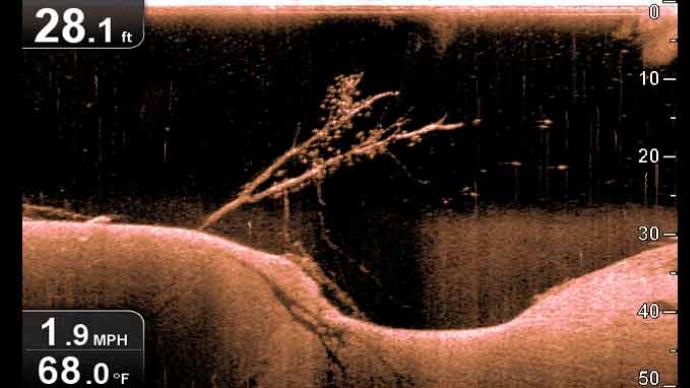In its never-ending search for the perfect fishing hole, Pond Boss visits the Deep South, where subscriber Rich Bowling of Mobile, AL has taken local materials and put them to use in his private impoundment. The work he has done to improve bass fishing will also serve the bluegill enthusiast in Illinois or the trout fan in Wisconsin.
Here is Bowling's story:
"Since my father built our 22-acre family lake back in 1972, we have fished in what amounts to a swimming pool. In 1997, though, we drained the lake and added man-made fish habitat that everybody calls "structure." Fish use bottom features to congregate, to find shade, to ambush their prey.
Since we started I have built six of these reefs, and it takes me a considerable amount of time to complete one of these projects. But it's well worth it. My friends and I regularly fish these locations, and we put meat in the boat.
It has gotten to the point I can not I stop building and sinking reefs to fish around. I may be suffering from CSS, a dreaded disease known as Chronic Structureless Syndrome.
Anyway, I have placed plenty of dense fish habitat in 1 to 4 feet of water, completely around the lake. I think we are in good shape in this department, so as time goes by, I find myself building bigger and taller reefs to sink in deeper water.
The reefs I have built most recently are nearly 14 feet tall. When placed far from shore, each one is an oasis for fish in what would otherwise be featureless deep water.
Before I started, Mom's only request was that these reefs be completely submerged. No problem. To date, I have sunk three reefs, with good results.
Unfortunately, one of my reefs fell due to my impatience in getting it down in the water. The remaining reefs are positioned in 10 and 14 feet of water.
Here in Alabama, the power companies have huge wooden spools that hold long rolls of wire. If you see some of these spools stacked in the yard of a utility, stop and ask if you can have one. I have yet to have a request turned down. These giant spools serve as the base for my reefs. Another key ingredient is a wooden shipping pallet. They can be found anywhere.
I break up the pallets and nail the planks (or tree limbs) to the spool to make it look like a grindstone on a gristmill or an old paddlewheel riverboat. This gives fish extra places to move in and out freely.
Rope is good for tying concrete cinder blocks to one side of the spool. That way, it's bottom-heavy and will stand more erect on the bottom.
Just use your imagination. Any shape or configuration will do the job. I had to learn a few things the hard way. Here are a few tips:
- I assemble my reefs on the dam, then use a chain or rope to pull it over so it rolls into the water. Pick a high spot so you can use gravity to your advantage.
- Once the reef gets into the water, it can be towed with a boat. In the summer, I usually just swim the whole thing to the spot where I want it.
- Make sure you have ample water depth. If the reef sinks in the mud, you have one big problem moving it.
- The reef will not fully submerge until the wood has absorbed water. I highly recommend being patient. Do not get in a hurry trying to sink one. If you do, after a big rain, your structure will float up or drift.
- Tie a rope to the side of the spool that will serve as the top. If the reef starts to tilt, you can use the rope to tug it into proper position. When the water's warm, I swim out and literally stand on the top of the reef, to help anchor it in the mud.
- Mark the reef with a floating jug.
A duck decoy is one good way to find the structure when you can't see it below the surface.
Many times, I have been in a boat and eased up next to one of these structures and seen hundreds of small bream and bass hanging nearby. Where small fish are congregating, you know what must be nearby.
Put that open water to good use. Your fish and your fishing friends will thank you."
Reprinted with permission from Pond Boss Magazine



